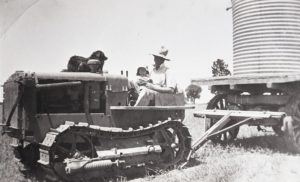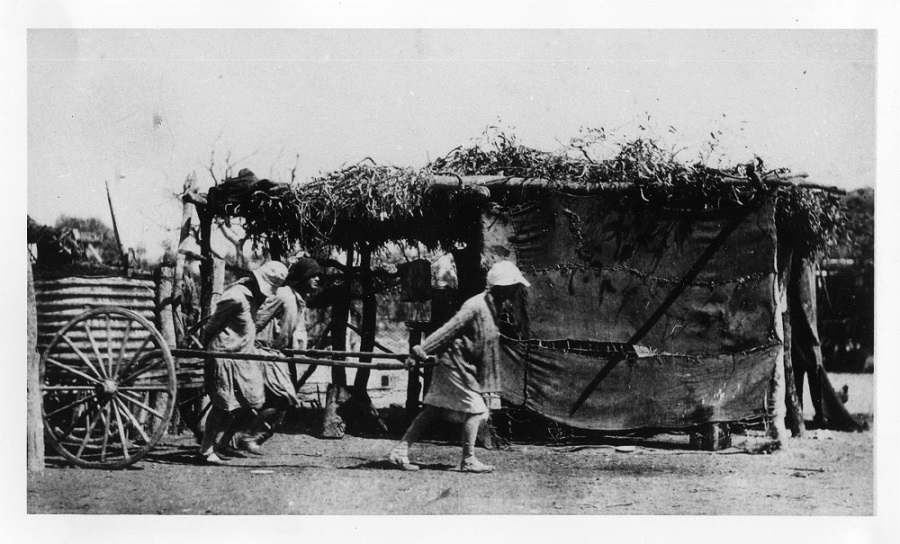
For nearly twelve months from May 2015 much of eastern Australia was gripped by a strong El Niño. Dams, tanks and reservoirs dried, the sky was unwaveringly blue and pastures were bleached beige. El Niños are among the climatic events which contribute to south eastern Australia’s exceptionally variable climate. These enigmatic phenomena evolve far from Australian shores and yet they shape our environment and profoundly impact our economy and society. El Niño became part of Australians’ vocabulary following droughts in the 1980s and 1990s, but long before these climatic events were named people had observed, respected and learned to live within their irregular but recurring grasp.
The El Niño La Niña Southern Oscillation (or ENSO) is a climatic cycle which drives weather around half of the globe. It is usually first noticed in autumn when the normally cool waters of the eastern and central Pacific Ocean warm. Countries on the eastern side of the Pacific such as Peru, Chile and parts of North America become wetter, cooler and more tempestuous as moisture evaporates from the warmer ocean. By contrast, on the western side of the Pacific Ocean colder than normal currents bring still, warm and cloudless weather and drought to inland eastern Australia, Indonesia, New Guinea and parts of southern Asia. El Niños also cause drought in Brazil and the change in ocean temperature can decimate marine life from Alaska to Mexico. El Niños generally last twelve months; they are at their strongest during winter and spring and the effects usually decline during the following autumn.
Three important El Niños defined the turn of the nineteenth and twentieth centuries: 1896-7, 1899-1900 and 1902-3. On a global scale, the impact of these three meteorological events affected, directly or indirectly more than half the world’s population as drought, famine and disease, as well as political mismanagement contributed to the deaths of at least 20 million people in India, Brazil and parts of China. In Australia, this period would later become known as the Federation Drought. In the eastern half of Australia - from Cape York to Launceston - 1896-1903 was the severest and most widespread drought since European settlement and agriculture was established on the continent. In a decade Australia’s flock of sheep declined by half and the herd of cattle by 40%. Many of these animals were killed prematurely as water and feed declined, or they perished from thirst, starvation or were bogged in dried rivers and dams. This huge loss, combined with the recurrent failure of wheat crops across the south eastern cereal belt precipitated a long-term churn in the rural population of western New South Wales, the Victorian Mallee and parts of South Australia. Many farms and stations failed, others amalgamated and new optimistic settlers moved in to try their luck. The Federation drought was also the catalyst for the establishment of largescale water projects such as the Wimmera-Mallee Stock and Domestic Water System and irrigation schemes along the Murray and Murrumbidgee in Victoria, New South Wales and South Australia. This drought became the benchmark against which all other droughts were compared for the next one hundred years.
Only a decade after the demise of the Federation Drought another cluster of El Niño events again gripped eastern Australia. 1914-1915 was the second of a double El Niño beginning in late 1913. Throughout south eastern Australia the cereal harvest declined to a quarter of the yield reaped the previous year. In some areas crops failed completely and high unemployment drove some young men to join the First World War during 1915. Throughout the drought people continued to pump water from the Murray River and by late 1914 the river had dried to a meagre trickle. People revelled in the horrifying novelty of picnicking on the dry river bed and in December 1914 Mallee farmer William Pearse delighted in strolling across the river between Victoria and New South Wales. Enterprising – or desperate – farmers constructed illegal barrages and weirs across the bed of the Murray. They used drays and sandbags to restrain the water from flowing downstream at Nyah, Wentworth, Renmark and Waikerie. Some of these were repeatedly destroyed by government officers, only to be rebuilt again and again by residents. These tussles reputedly continued for weeks, ending, with the weirs finally being destroyed by explosives.
Strong El Niños in 1940-1, 1941-2 and 1946-7 contributed to the long Second World War drought which was felt particularly strongly in Victoria, New South Wales, eastern South Australia, parts of Queensland and agricultural areas of Western Australia. In some regions this drought lasted for over eight years. Large rivers such as the Murray and Hunter were again reduced to a series of stagnant pools, the Black Friday fires of 1939 burnt swathes of Victoria and choking sandstorms carried agricultural topsoil many hundreds of kilometres. The Second World War drought marked the final in a series of droughts which characterised the late nineteenth and early twentieth century. The decades between 1890 and 1950 were the driest in south eastern Australia’s recorded meteorological history and these droughts contributed to shaping settlement, agriculture, society and the environment in inland eastern Australia. Will the El Niño events which have beset the continent since the end of the twentieth century become another period of transformation in Australian society? With the spectre of anthropogenic climate change already taking affect, how will Australia and the Pacific region fare during future El Niño events?
In January of this year the Bureau of Meteorology declared that the 2015-16 El Niño was beginning to wane. Although the weather is still hot and dry, by the middle of the year rain is likely to return to something resembling normality, blue sky will again become smudged with clouds, reservoirs and dams will be recharged, vegetation will green and parched soil will moisten. Eastern Australia will sigh with relief - until the next El Niño.
Useful references:
Australian Government Bureau of Meteorology website http://www.bom.gov.au/
Mike Davis, Late Victorian Holocausts: El Niño Famines and the Making of the Third World. London, New York: Verso, 2001.
Grace Willoughby, On this Bend of the River, Nyah District Action Group, 2003, first published in 1993 for the Nyah District Centenary Committee.
The first image illustrates three women carting water in about 1930 from the collection of the State Library of South Australia.
The second image illustrates a less strenuous method for carting water. This photograph was taken near Goodnight on the Murray River in New South Wales during the 1940-41 El Niño. Swan Hill Regional Library Local History Collection.
A version of this post was first published on the website of the School of History, Australian National University in 2015.

Finding this post has aneesrwd my prayers